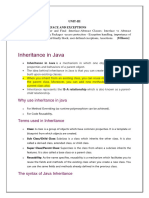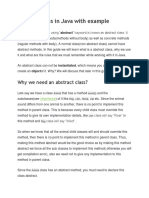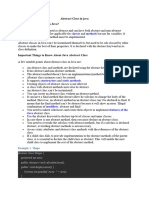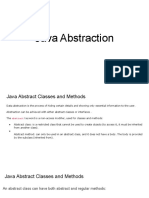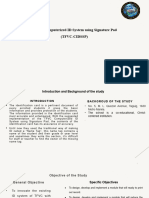0% found this document useful (0 votes)
9 views6 pagesDefining An Interface
The document explains abstract classes and methods in Java, highlighting that abstract classes cannot be instantiated and must contain abstract methods if any are defined. It also discusses interfaces, which are fully abstract and require implementation by classes, allowing for multiple inheritance. Key points include the use of the 'abstract' keyword, the necessity of overriding abstract methods in subclasses, and the advantages of using interfaces for abstraction and security.
Uploaded by
akileshwari RCopyright
© © All Rights Reserved
We take content rights seriously. If you suspect this is your content, claim it here.
Available Formats
Download as DOCX, PDF, TXT or read online on Scribd
0% found this document useful (0 votes)
9 views6 pagesDefining An Interface
The document explains abstract classes and methods in Java, highlighting that abstract classes cannot be instantiated and must contain abstract methods if any are defined. It also discusses interfaces, which are fully abstract and require implementation by classes, allowing for multiple inheritance. Key points include the use of the 'abstract' keyword, the necessity of overriding abstract methods in subclasses, and the advantages of using interfaces for abstraction and security.
Uploaded by
akileshwari RCopyright
© © All Rights Reserved
We take content rights seriously. If you suspect this is your content, claim it here.
Available Formats
Download as DOCX, PDF, TXT or read online on Scribd
/ 6
















